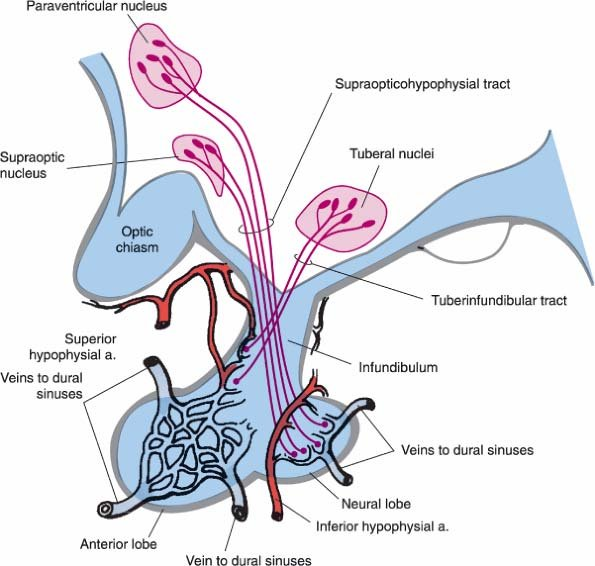Anatomy and connections of the hypothalamus
The hypothalamus is an essential section of the substance of the brain. A small cone-shaped structure, it plans downward, ending in the pituitary (i.e., infundibular) stalk, a tubular association to the pituitary gland. The round bony cavity having the pituitary gland is known as the sella turcica. The posterior part of the hypothalamus, known as the median eminence, consists of many neurosecretory cells. Significant adjoining structures involve the mammillary bodies, the third ventricle, and optic chiasm, the previous being of specific concern to physicians since pressure from expanding tumors or inflammations in the hypothalamus or pituitary gland might result in severe visual defects or full blindness. Above the hypothalamus is the thalamus.

The hypothalamus regulates homeostasis. It has regulatory areas for body temperature, hunger, water balance, thirst, and blood pressure, and links the nervous system to the endocrine system.
The hypothalamus has mutual interaction with the rest of the body through two (probably three) quite different routes: neural connections, the bloodstream and the CSF.Few hypothalamic neurons have precise receptors which sense the osmolarity, temperature, free fatty acid, glucose, and hormone content of the blood. The Neurosecretory neurones secrete neurohormones into the blood. It controls the anterior- pituitary and act on organs like the breast, kidney, uterus and blood vessels. A few of the neural connections, particularly those to the mammillary bodies, form discrete myelinated fascicles, though most are diffuse, unmyelinated and their origin and termination are unsure. Many pathways are multisynaptic and most of the synapses on hypothalamic neurones are derived from intrinsic inter-neurons.